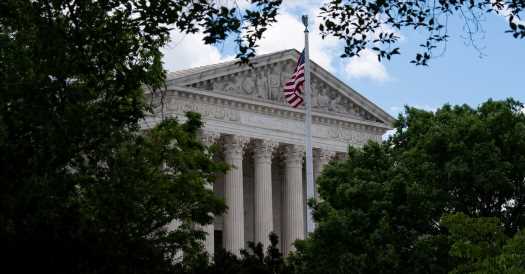WASHINGTON — The Supreme Court said on Monday that it would decide whether a congressional voting district in South Carolina should be restored after a lower court struck it down as an unconstitutional racial gerrymander.
A unanimous three-judge panel of the Federal District Court in Columbia, S.C., ruled in January that the state’s First Congressional District, drawn after the 2020 census, violated the Constitution by making race the predominant factor.
The district, anchored in Charleston, had elected a Republican every year since 1980, with the exception of 2018. But the 2020 race was close, with less than one percentage point separating the candidates, and Republican lawmakers “sought to create a stronger Republican tilt” in the district after the 2020 census, the panel wrote.
The lawmakers achieved that goal, the panel found, in part by the “bleaching of African American voters out of the Charleston County portion of Congressional District No. 1.”
The new House map moved 62 percent of Black voters in Charleston County from the First District to the Sixth District, a seat that Representative James E. Clyburn, a Black Democrat, has held for 30 years.
The move helped make the new First District a Republican stronghold. In November, Nancy Mace, the Republican incumbent, won re-election by 14 percentage points.
Republican lawmakers acknowledged that they had redrawn the First District for partisan gain. But they said they had not considered race in the process.
The panel ruled that the district’s boundaries must be redrawn before future elections are held. But the panel rejected challenges to two other House voting districts, saying that civil rights groups had failed to demonstrate that the districts had been predominantly drawn to dilute Black voting power.
The Supreme Court has said that lawmakers can take race into account in drawing voting districts to comply with the Voting Rights Act but cannot make it the predominant factor. That principle, rooted in the Constitution’s equal protection clause, is often invoked to limit the creation of districts that empower minority voters.
In the new case, Alexander v. South Carolina State Conference of the N.A.A.C.P., No. 22-807, the challenge came from the opposite direction, saying that the map hurt Black voters by moving them from one congressional district to another.
The Supreme Court will soon decide whether to allow a congressional map drawn by Republican lawmakers in Alabama. A lower court had said the map diluted the power of Black voters, violating the Voting Rights Act. The South Carolina case poses different questions, centered on the Constitution’s equal protection principles.
In their Supreme Court appeal, South Carolina Republicans argued that the panel should have presumed that they had acted in good faith, as required by Supreme Court precedent, and analyzed the district as a whole.
“The result,” the lawmakers wrote, quoting from an earlier decision, “is a thinly reasoned order that presumes bad faith, erroneously equates the purported racial effect of a single line in Charleston County with racial predominance across District 1, and is riddled with ‘legal mistakes’ that improperly relieved plaintiffs of their ‘demanding’ burden to prove that race was the ‘predominant consideration.’”
The challengers, represented by the American Civil Liberties Union and the N.A.A.C.P. Legal Defense and Educational Fund, told the justices that “the panel correctly found that race was the gerrymander’s primary vehicle.”
“That predominant reliance on race is impermissible even if mapmakers used race as a proxy for politics,” the challengers’ brief said.
Source: Read Full Article
-
Starmer’s waiting lists vow ‘can’t be staffing stop-gap’
-
Mike Froman to replace Richard Haass as Council on Foreign Relations president
-
The Legacy Dilemma: What to Do About Privileges for the Privileged?
-
Game over! Sunak humiliated as Truss ally states result is foregone conclusion
-
Varadkar narrowly wins no confidence vote to avoid general election

